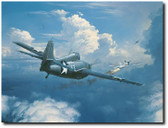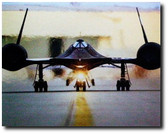 Loading... Please wait...
Loading... Please wait...- Home
- Aviation Art - By Artist
- Larry Selman
- I'll See You in St. Lo!
Categories
I'll See You in St. Lo!
Product Description
About Planejunkie:
Planejunkie is a division of a 25 year old company. We've specialized in Aviation, Historical and Military Art and have worked directly with the Artists and Pilots you'll see on our products. Since we are fairly new to E-bay don't be alarmed that we don't have an extensive history rating. Be assured that your Prints and Aviation Collectibles will be authentic and will ship on time. We pride ourselves in quality products and customer satisfaction. Check out our entire line... Thanks!
L/E of 500 (Military Edition)...$130.00
S/N by the Artist
Image Size: 27" x 16"
Also Available as...
L/E of 100 (Publishers Proof)...$145.00
S/N by the Artist
Image Size: 27" x 16"
L/E of 100 (Artist Proofs)...$165.00
S/N by the Artist
Image Size: 27" x 16"
On July 13, 1944, Major Thomas D. Howie, one of the most well respected Stonewallers of the 116th Infantry Regiment, America’s “Stonewall Brigade,” was given command of its Third Battalion. Four days later, in the early morning hours of July 17, he leads a successful night bayonet assault to relieve the beleaguered Second Battalion, which had been surrounded by the Germans in their successful advance toward the critical road junctions in the French town of St. Lo. As dawn broke, Major Howie radioed to the 116th Regimental Commander, Colonel Phillip Dwyer, that his attack had been successful and asked for further orders. At 0730, Colonel Dwyer called Howie, ordering his Battalion to lead the advance to St. Lo. “Will do,” the young Major replied without hesitation. Then he called his company commanders together and laid out the plan for the upcoming advance.
As the strategy session was concluding, German forward observers on the Martinsville Ridge north of the position spotted the gathering and called for indirect fire on the Americans. Hearing the incoming rounds, Major Howie shouted for his men to get to safety. As they raced for the nearest protection, recently captured German defensive positions, he held his location, waiting to make sure that all of his Stonewallers made it to safety. As his subordinates jumped into the cover of the nearest holes, Howie shouted for all to hear, "I’ll see you in St. Lo!" Almost immediately, mortar rounds began impacting at the temporary command post where only the Major and his enlisted aide, Sergeant Bob Evans, remained.MMajor Howie was struck by fragments from the exploding mortar rounds and almost immediately fell mortally wounded. His executive officer, Captain William H. Puntenney, raced back and pulled him into the closest trench where the Major died a few moments later. The rounds also struck and killed Sergeant Evans. Pinned down by the ensuing barrage, which lasted throughout the day, the Third Battalion never was able to initiate its assault. The next day, July 18, the 29th Division’s "Task Force C," a mobile organization of Sherman tanks, tank destroyers, and mounted infantry, completed the penetration into St. Lo. Learning of the death of Major Howie, Major General Charles Gerhardt, commanding the 29th Division ordered the Major’s last shout to his men be fulfilled.
The remains were sent to the entrance to the city and placed on the rubble of the Church of the Holy Cross where all of the soldiers entering the city would pass the flag-draped coffin. For security reasons and pending notification of Howie’s family, the identity of the remains was unknown for weeks, but the scene of his body resting in the town square as the American troops entered St. Lo became a famous picture captured by numerous war correspondents. The photo was soon appearing in publications throughout the United States, to include Life Magazine. It carried the simple caption, "The Major of St. Lo." In Staunton, Virginia, the home of Thomas D. Howie, when a new armory was build as the Headquarters of the 116th Regiment, it was dedicated to his memory.
Today it remains the home of the famous 116th Infantry, recently reorganized as a Brigade Combat Team. Numerous memorials were also dedicated at the Staunton Military Academy where the Major was an instructor before the outbreak of the war. Today this recognition is part of the campus of Mary Baldwin College. Probably the most impressive memorial to Tom Howie is positioned at the main entrance to St. Lo, only a short distance from where he fell. A small chapel in la Madeline near there, just west of the city, is also dedicated to his memory and the sacrifice of the 116th Infantry Regiment of the 29th Division in liberating its residents.








